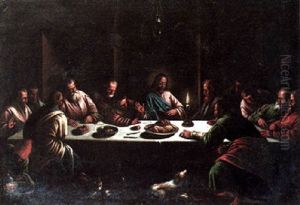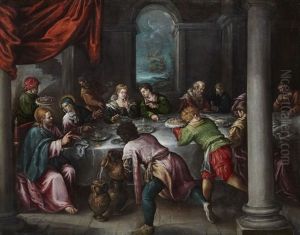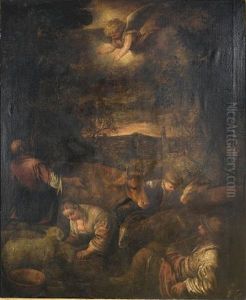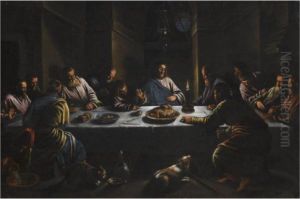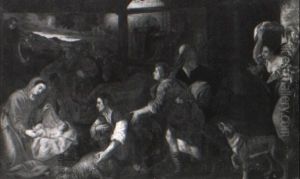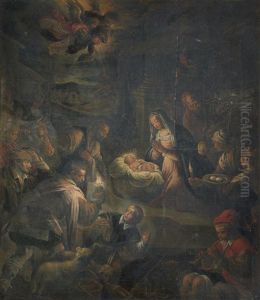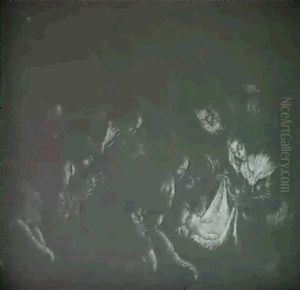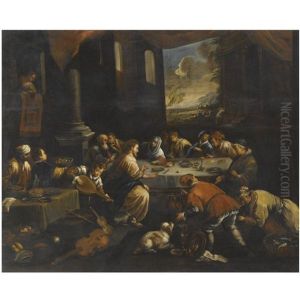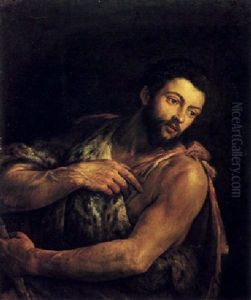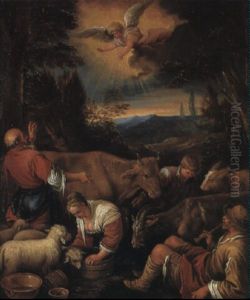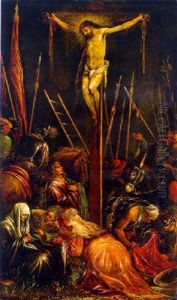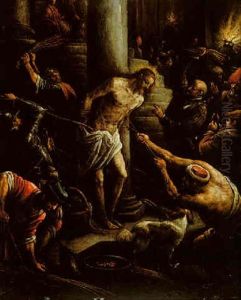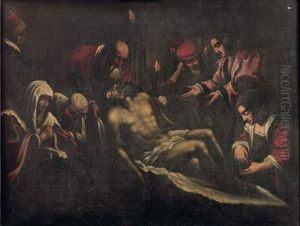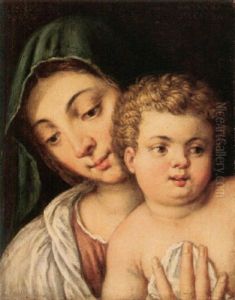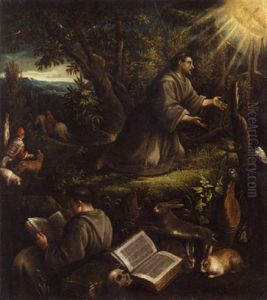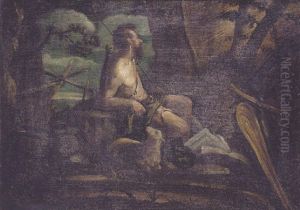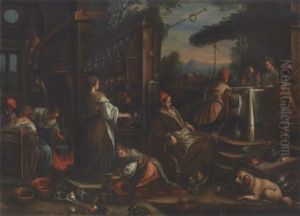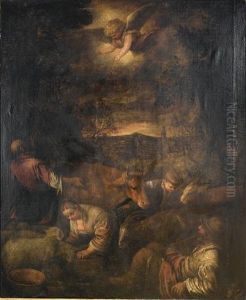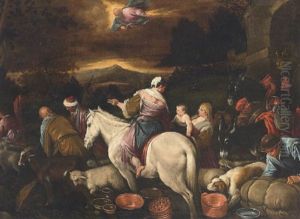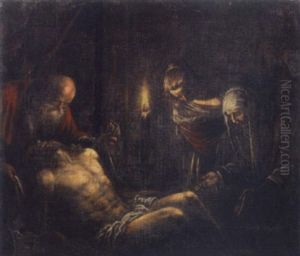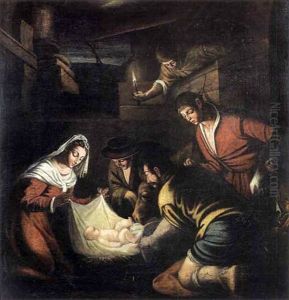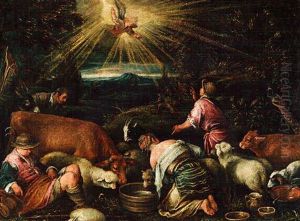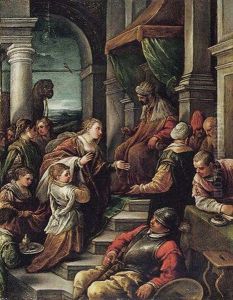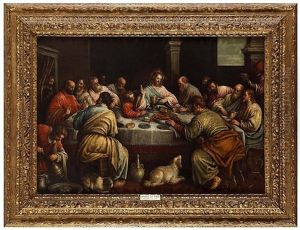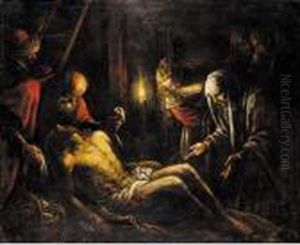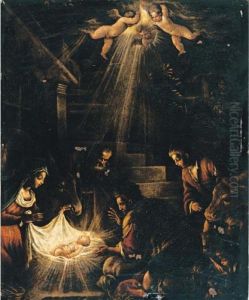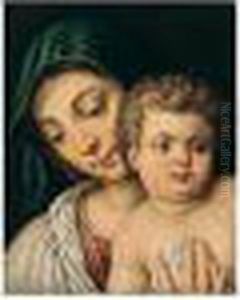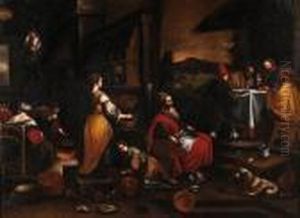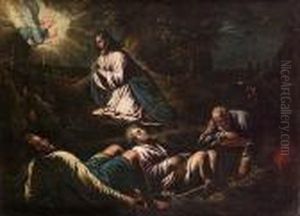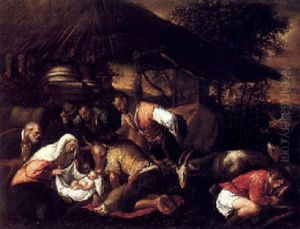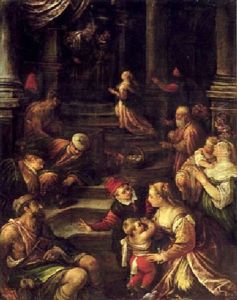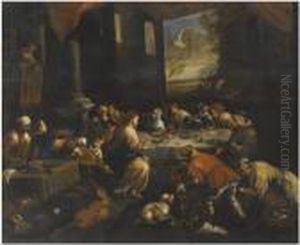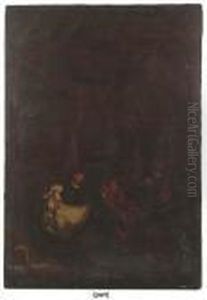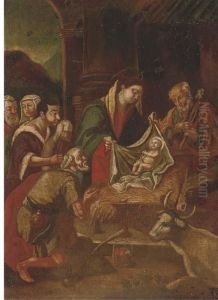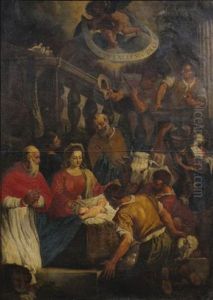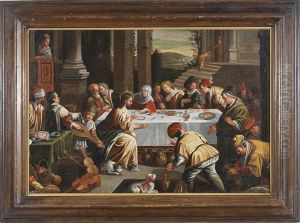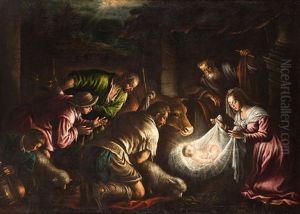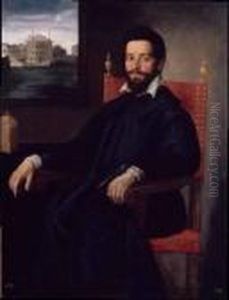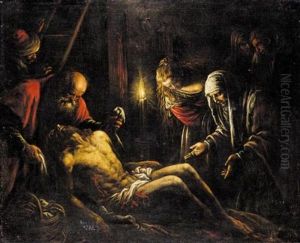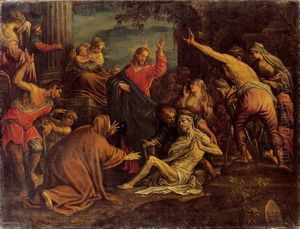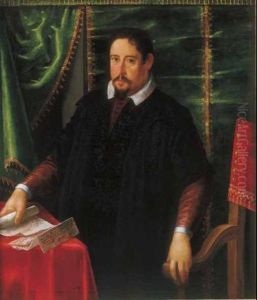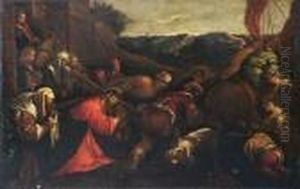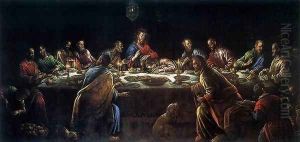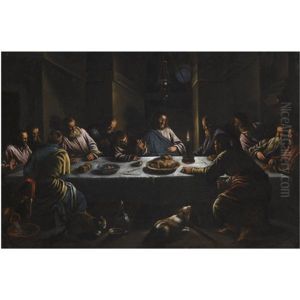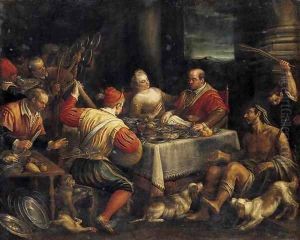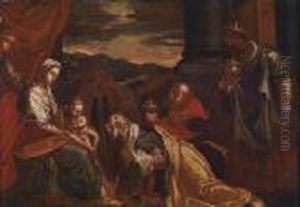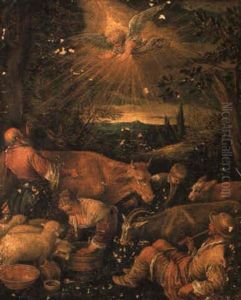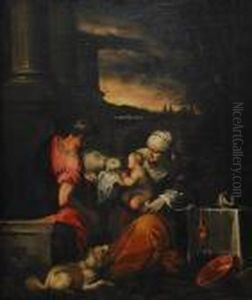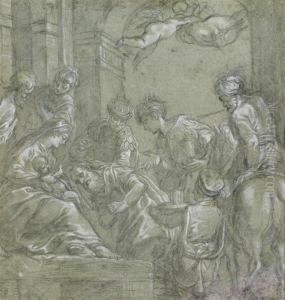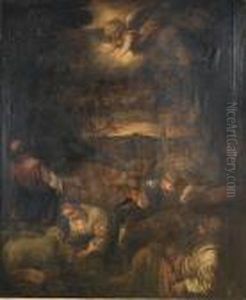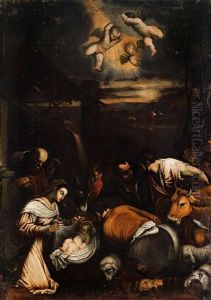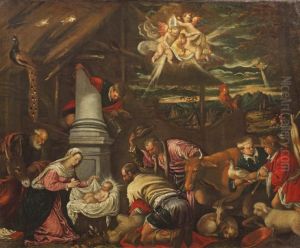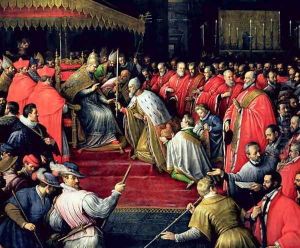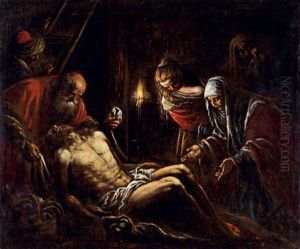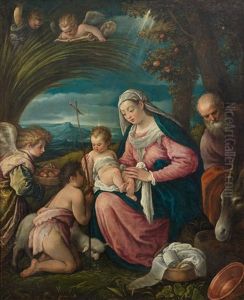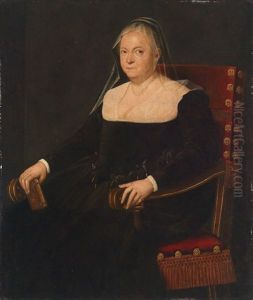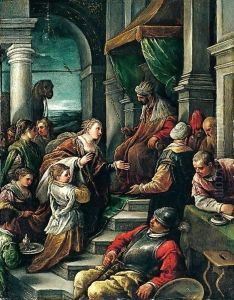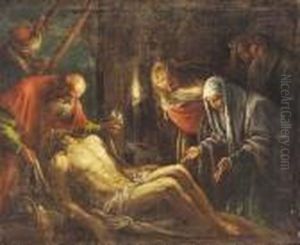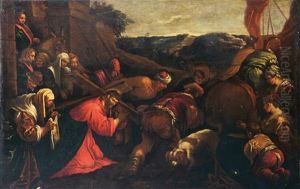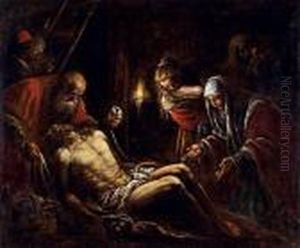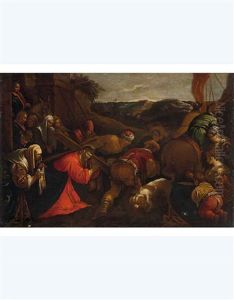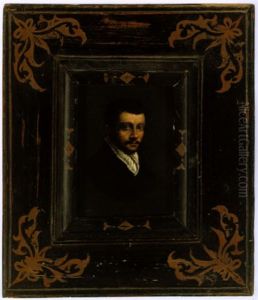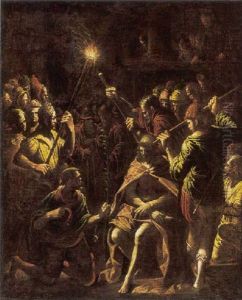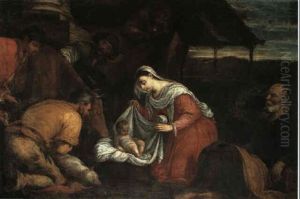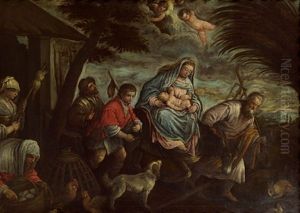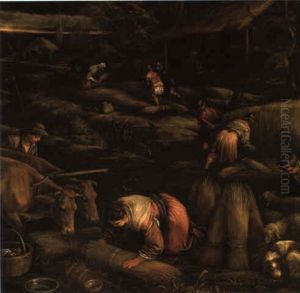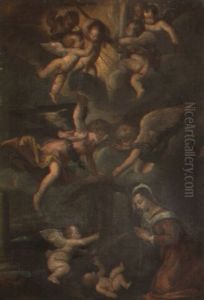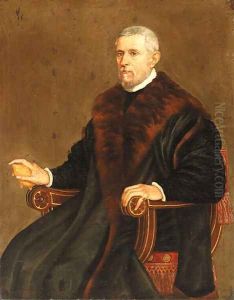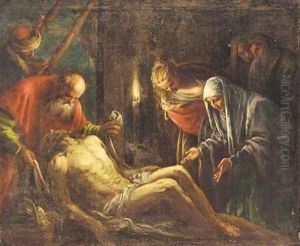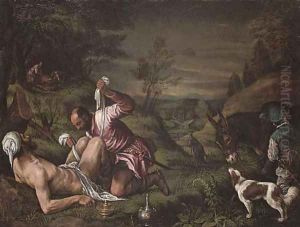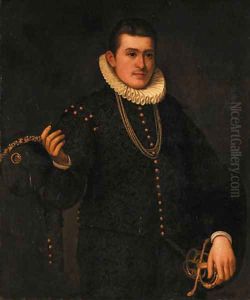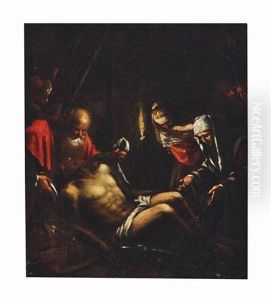Leandro Bassano Paintings
Leandro Bassano, also known as Leandro dal Ponte, was a prominent Italian painter of the Renaissance period, born in 1557 in Bassano del Grappa, Veneto. He was part of the illustrious Bassano family of painters, being the younger brother of the famous Jacopo Bassano and alongside his siblings, he contributed significantly to the Bassano painting dynasty that was highly influential in 16th-century Venetian art. Leandro is particularly noted for his religious, mythological, and historical scenes, as well as his adeptness in portrait painting.
Leandro's early training was under the tutelage of his father, Jacopo Bassano, in their hometown. The family workshop was a bustling center of artistic activity, and it was here that Leandro honed his skills, absorbing the rich tradition of Venetian painting. His work is characterized by its dynamic compositions, vibrant color palette, and the detailed depiction of both figures and landscapes, traits that he shared with and also developed beyond the styles of his father and brothers.
In 1588, Leandro moved to Venice, which was a turning point in his career. His move coincided with a period when Venice was a thriving hub for artists, and Leandro's talents flourished in this competitive but inspiring environment. He received numerous commissions from churches and scuole (religious confraternities), and his ability to adapt to the grand Venetian style while maintaining a distinct personal touch gained him fame and recognition. Among his notable works from this period are the frescoes in the Doge's Palace and contributions to the Scuola Grande di San Marco.
Leandro Bassano was also known for his portraits, which were highly sought after by the Venetian aristocracy and foreign dignitaries alike. His portraits are celebrated for their realism, psychological insight, and the meticulous attention to detail in the depiction of fabrics and jewels, reflecting the opulence of Venetian society at the time.
Despite his success, Leandro's later years were marked by personal tragedies and financial difficulties, a common plight for many artists of his era. Yet, his legacy endures through his contributions to the Venetian Renaissance, and his works continue to be studied and admired for their beauty and historical significance. Leandro Bassano died in Venice in 1622, leaving behind a rich body of work that cements his place among the great painters of the Renaissance.
